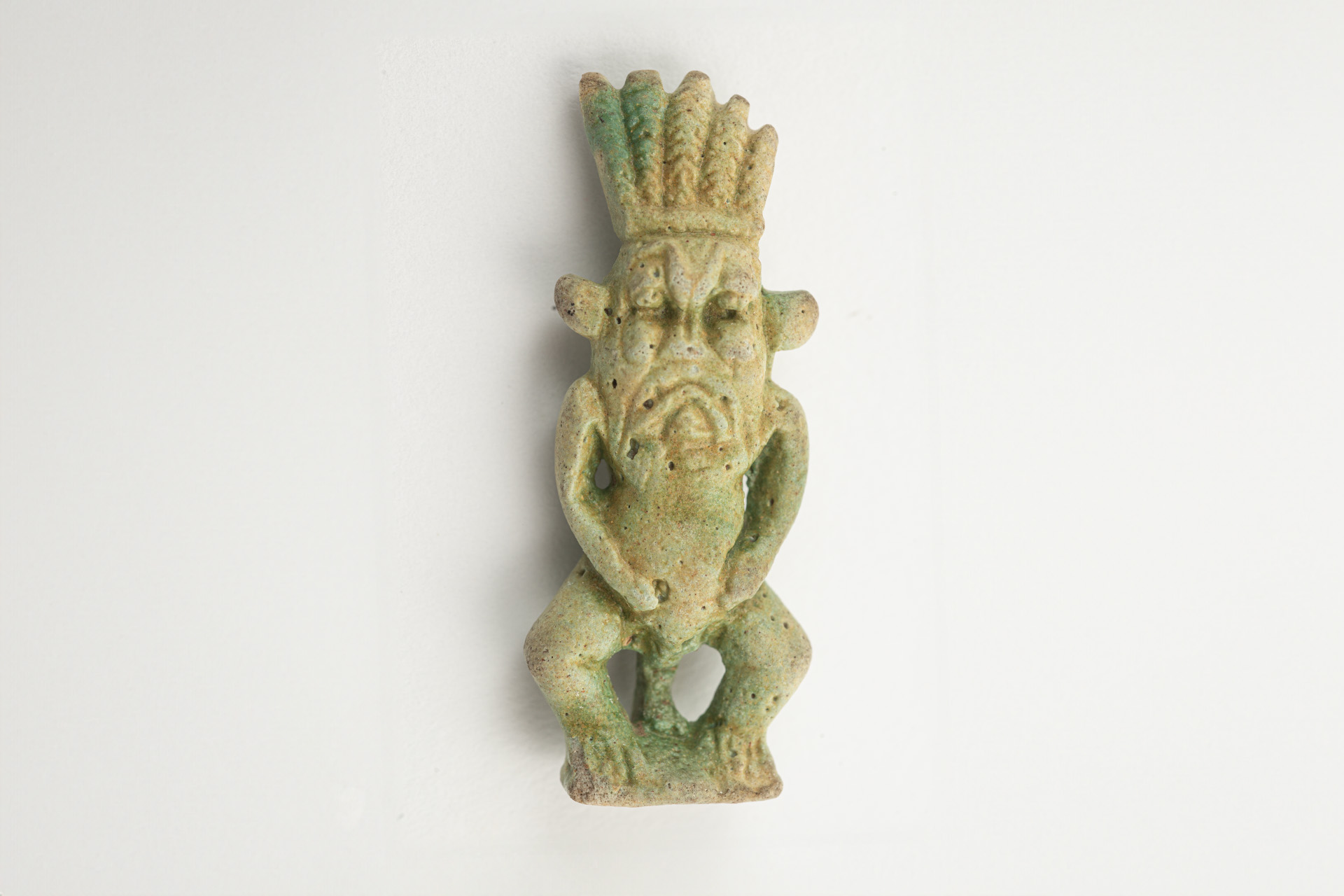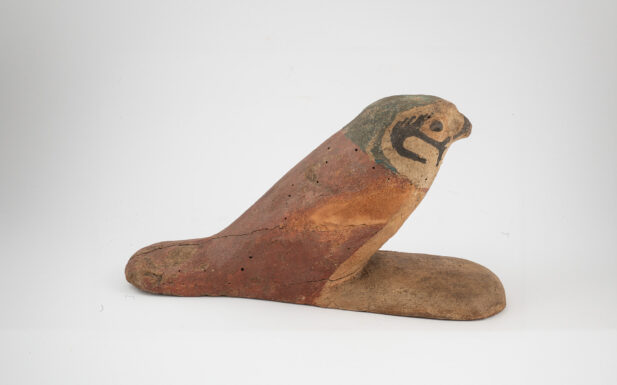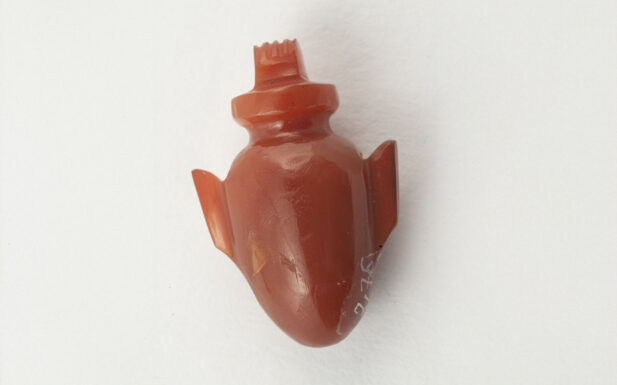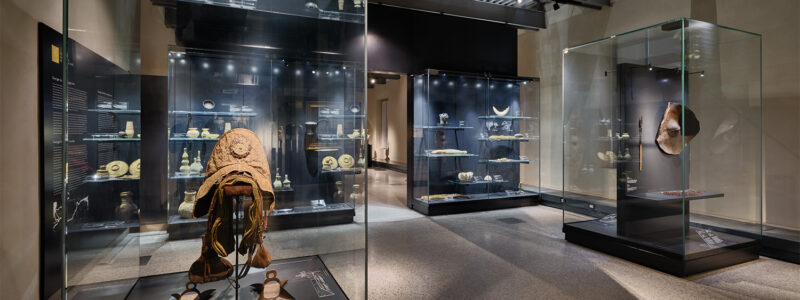The name Bes possibly derives from the word besa ‘to protect’ and indicates a dozen deities and demons, very similar in appearance but not all related in origin. The first attestations of the god, or of some related deity, date back to the Middle Kingdom (2046-1794 BC), but it is only from the New Kingdom (1539-1070 BC) that the cult of Bes spread throughout Egyptian society as a protector of the home, of pregnant women and of childbirth. In the Ptolemaic era, the god is also associated with fertility and sexuality, while in the Roman era he becomes part of the myth of the boy Horo, whom he has to protect from Seth, brother and murderer of his father Osiris. This statuette shows the god in a typical dwarf iconography with stubby, short legs, a big belly and a head with lion-like ears and mane, wide-open eyes, flattened nose, tongue out between his teeth and a thick beard. The long rear tail has been lost, as have the lower part of his legs and the feathers of the headdress. The presence of a lion skin (leonté) on the shoulders can be deduced from the outline, however worn out, of the feline’s head in the centre of his chest. This detail and the stylistic characteristics of the statuette suggest it dates back to the Ptolemaic or Roman periods.
7th-4th century BC.
full-round maiolica








